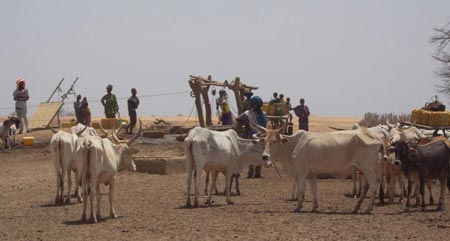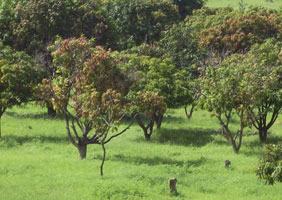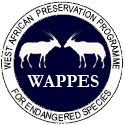1. Protection against desertification
Desertification- a global problem
Kofi Annan (UNO Secretary General) describes desertification in his speech from the 17.July on the occasion of the World Day to Combat Desertification as "one of the greatest threats for humanity". Worldwide there are at least 100 Countries where a fifth of the world's population is affected by desertification. Especially in Africa, where 66% of the landscape are represented by deserts or drylands, desertification poses a massive and life-threatening Problem. (Source: UNCCD, United Nations Convention to Combat Desertification)

Definition
Desertification identifies the permanent extension of deserts in relatively dry areas. The main cause for this drastic change are humans, as it is their interference with the particular ecosystems which facilitates desertification. The result is devastating if it is combined with rough weather conditions, like for example storms, high temperatures or drought.
Main Cause
- The main cause is overgrazing, i.e. too many animals are being held in a place, which cannot support them. The animals eat all plants and therefore loosen the ground. This causes increasing erosion, which in return aggravates the growth of new plants.
- The second reason is maladjusted agriculture (exhaustive cultivation). Shortened recovery times, erroneous irrigation techniques and unsuitable plants are causing changes in conditions of the soil and therefore reduce the vegetation.
- A third very important reason is the uncontrolled logging in arid areas. The extraction of farmland and the demand for firewood and timber reduce the tree population strikingly.

Impact
The impact of desertification is devastating. The agricultural and especially the silvicultural productivity as well as the biodiversity decline significantly. The desertification destroys habitats of whole regions and therefore creates a huge obstacle to development.
Importance of the park
The planting of trees in the northern region aims to successfully combat the imminent desertification of the park. A cultivation of different kinds of trees and bushes, which produce agricultural products, has proven its value in many projects concerning reforestation. They not only reduce evaporation and provide protection against the wind but also create jobs and possibility to earn money for the local population. The cultivation of pistachios in particular has shown positive results in the fight against desertification in several countries.
2. The Regeneration of Flora and Fauna
Nowadays there are more animal and plant species, which are threatened with extinction, as ever: The World Conservation Union (IUCN) which annually releases the "Red List" estimates the amount of endangered species worldwide as more than 15 000. There are currently more than 50% plant species threatened with extinction.

Humans cause the endangerment of most animals and plants: deprivation of natural habitats, poaching and pollution are amongst the main causes for the loss of several species.
The consequences are overwhelming and incalculable, due to the fact that the extinction of one species is not only irreversible but also the beginning of a chain reaction, which leads to depletion of other species. Humans often realise the value of for the ecological equilibrium allegedly insignificant animals and plants when it is far too late. In addition, with the decline of biodiversity, many plants are irreversibly lost, which might play a role in the production of medicine in the future. (Source: IUCN, The International Union for the Conversation of Nature and Natural Resources)
Aim
The protection and restoration of domestic flora and fauna as part of the national biodiversity, which needs to survive in order to maintain the ecological equilibrium as well as for the coming generations.
Importance for the park
The biozone which has been created to implement the project has the disposal of a particularly huge terrain of around 115 000ha. This size is essential in order to create a species-appropriate habitat, where animals and plants can grow up and live. The main objective of the biozone is to protect endangered animals and plants.
The "Red List" maintained by IUCN lists about 100 different endangered species in Senegal, e.g.:
| Species | Latin Notation | |
|---|---|---|
| Animals | Cheetah | Acinonyx jubatus |
| Antelope | Alcelaphus buselaphus Cephalophus rufilatus Cephalophus maxwellii |
|
| Giraffe | Giraffa camelopardalis | |
| Tortoise | Caretta caretta Geochelone sulcata |
|
| Crocodile | Crocodylus cataphractus | |
| Hyena | Crocuta crocuta | |
| Gazelle | Gazella dama Gazella dorcas Gazella rufifrons |
|
| Hippopotamus | Hippopotamus amphibius | |
| Elephant | Loxodonta africana | |
| Plants | Senegalese Mahogany | Khaya senegalensis |
| Grenadill | Dalbergia melanoxylon | |
| Afzelia | Afzelia africana |
Detailed information about endangered animals and plants can be found under: www.iucn.org


